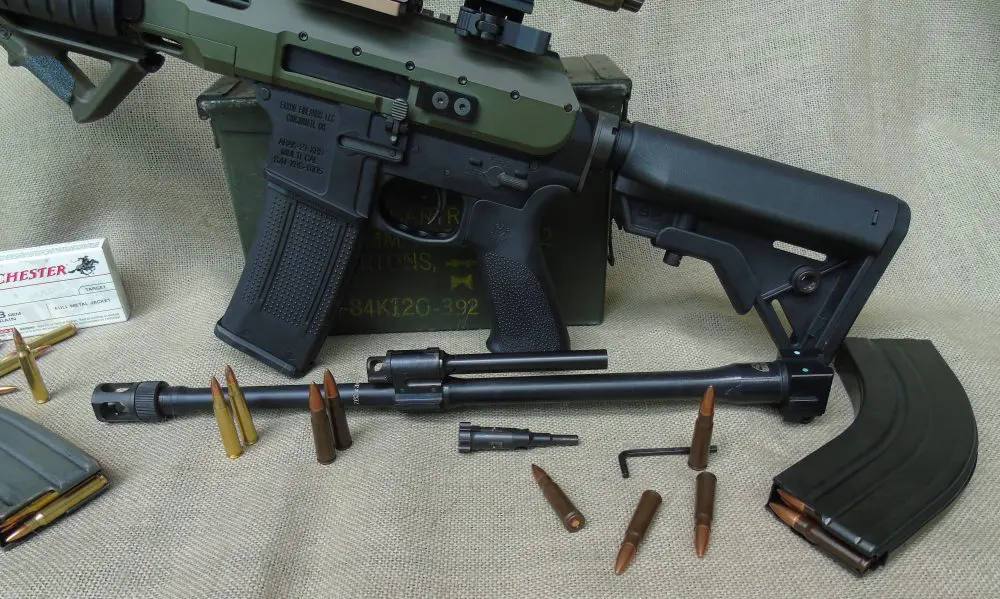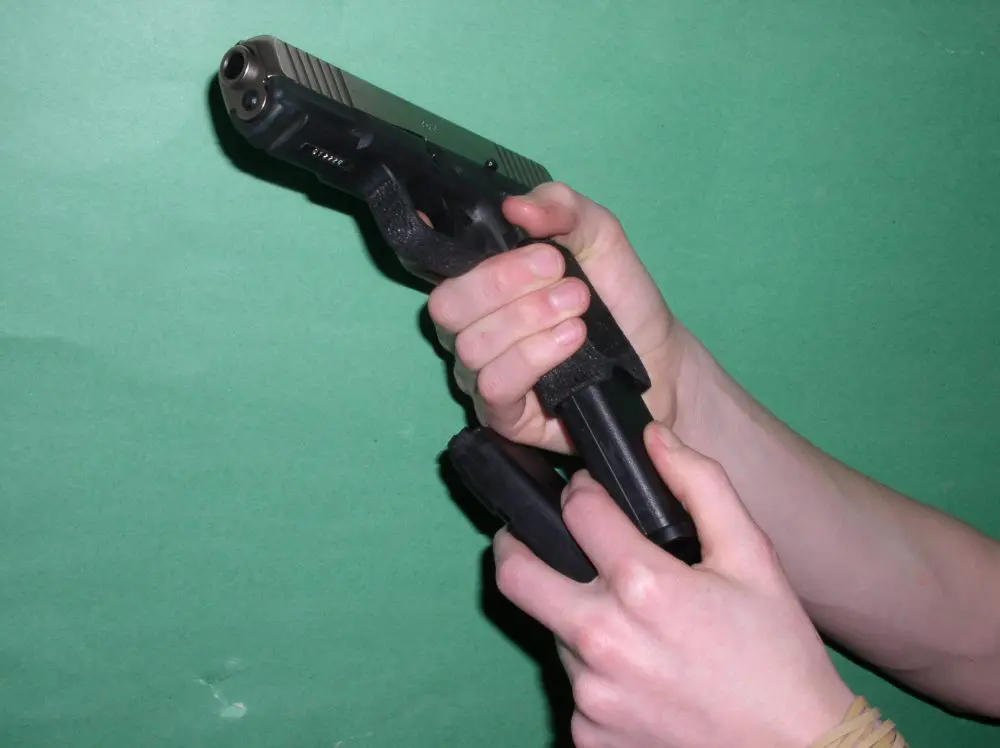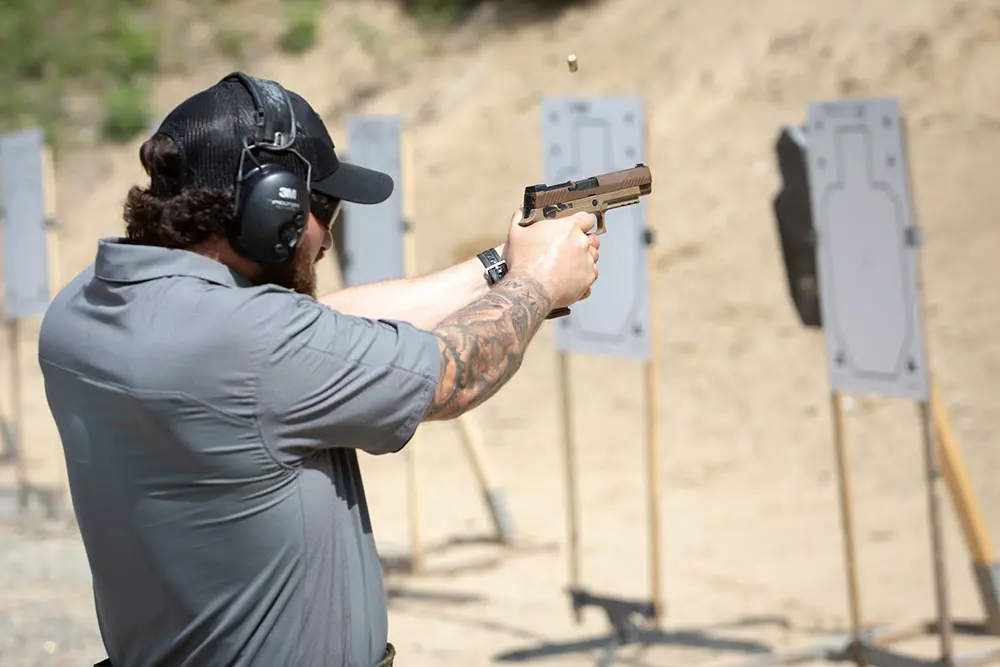Just about every reputable firearms manufacturer makes a version of the venerable AR-15. Whether opting for the traditional direct gas impingement system or the newer piston operated versions, the choices that face the neophyte M4 buyer are vast.
While many gun guys spend an abundance of time researching and tweaking available designs to fit their needs, there exists a segment of the gun community that merely looks for a gun that works reliably 100% of the time, right out of the box. These users have little desire to accessorize or optimize their rifles. They simply want a gun that always works well.
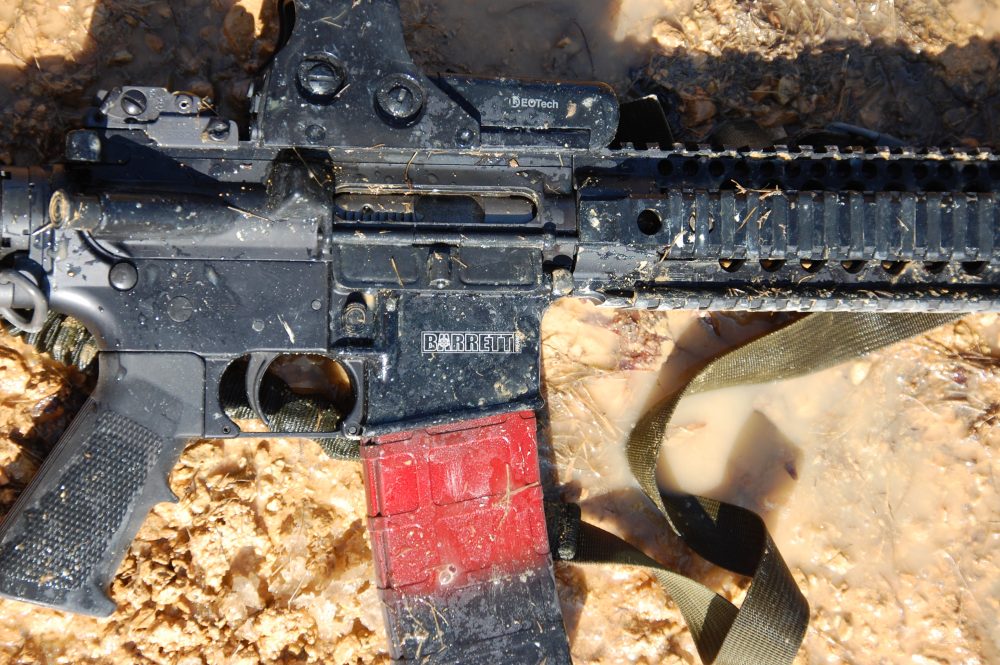
Table of Contents
Barrett Rec7 vs Kalashnikov
For years now, American shooters have known that the durable Kalashnikov rifle is a reliable although cumbersome and dated weapons platform. To most, it seems to lack the sophistication and technical precision of the AR. Nobody can deny that AKs work, even in the worst of conditions, with a complete lack of maintenance or care. Unfortunately, the AR has never built up the reputation for utter reliability and maintenance-free operation that the AK has always had—until now.
Enter the Barrett Firearms Manufacturing REC7 in 5.56x45mm NATO. The rifle itself isn’t new to the Barrett lineup; it has been available in the 6.8mm SPC cartridge for a few years now. The 6.8 SPC has acquired a faithful following, although it’s not an inexpensive round to shoot. In fact it is nearly in .308 territory for cost per round.
Fans of the Barrett REC7 appreciate its power, accuracy and, most important, reliability. The short-stroke gas piston operating system works well under the conditions that cause many ARs to sputter and quit. However, the limited availability of the 6.8 SPC cartridge and the logistics of an unfamiliar, non-military cartridge have kept many shooters away from the rifle. The release of the Barrett REC7 in 5.56x45mm is a welcome addition to the piston-operated AR market. It offers the accuracy that AR users expect, along with the AK-like reliability AR users have been wanting for years.
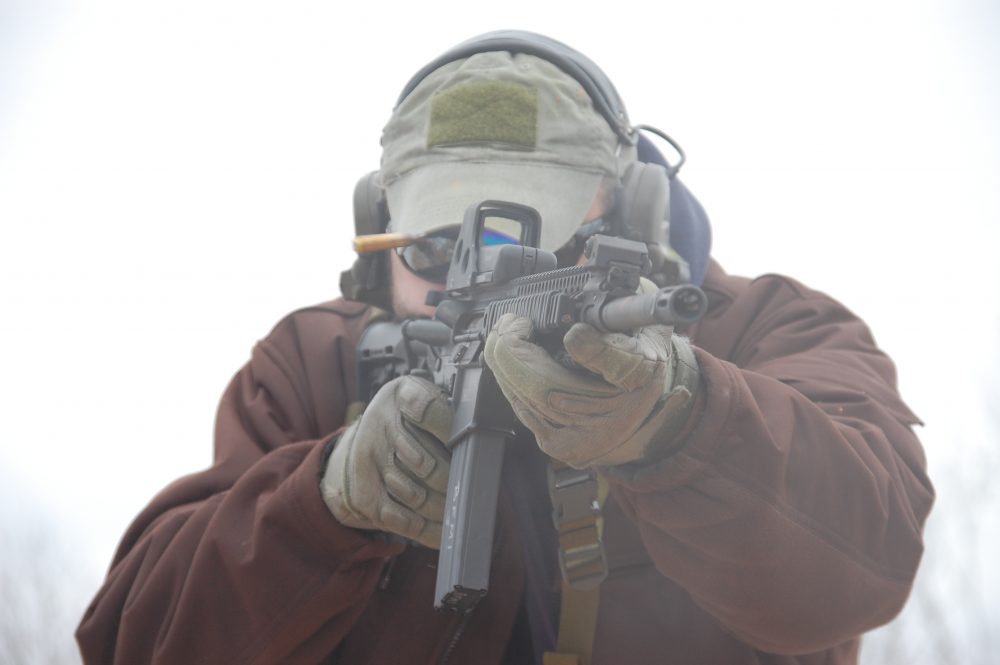
In The Field
Prior to extensively testing the Barrett REC7 in 5.56mm, I was able to speak with Tim Mulverhill, Ammunition and Small Arms Manager for Barrett Firearms. Tim schooled me on the subtleties of the REC7. The service life of the piston system exceeds the life of the barrel. The only overhaul needed for the piston system is to replace the return spring every 15,000 rounds. The barrel and bolt are Magnetic Particle Inspected (MPI) and high pressure tested.
The rail system on the REC7 5.56mm is the Daniel Defense Omega X Rail 9.0. The REC7 has the thickest piston on the market today. The REC7 will eventually be offered as an upper and, if using a select-fire bolt carrier, the REC7 upper will work on any milspec lower. In addition to the 16-inch version I tested, there will be 8″, 12″ and 14.5″ barrel lengths offered.
As the Medical Program Director and a Firearms Instructor for Tactical Response Incorporated, I teach firearms training classes and attend shooting competitions regularly. I am always interested in seeing what skilled and experienced shooters do to their individual weapons to keep them running. With ARs, most of the maintenance issues boil down to magazines and cleanliness. Because conventional ARs inject carbon gases into their action to actuate the bolt carrier and operate the gun, the weapons get dirty quickly. The carbon that builds up on operating surfaces becomes caked on and makes the guns run roughly or not at all.
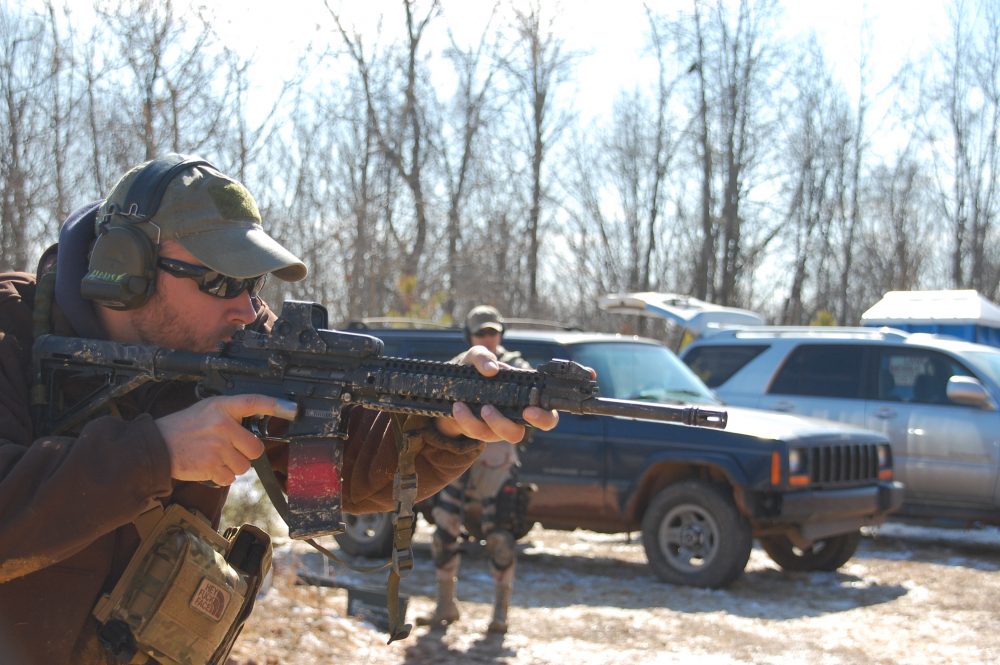
The Barrett system differs in that there is a gas port, which vents gases from the barrel into a piston head that activates an operating rod. The operating rod strikes the bolt carrier where the gas key on a direct impingement gun previously resided. This results in the bolt carrier group moving backward and operating the gun. With no carbon being injected into the gun, the gun stays cleaner longer and doesn’t accumulate the carbon debris that stops ARs from running effectively. Without hot gases coming into the chamber, the user’s end of the gun also stays cool.
Tactical Response’s Fighting Rifle class
I figured the best way to test the new Barrett REC7 in 5.56 was to take it to a high volume firearms training class. Tactical Response offers some of the most thorough, rigorous gunfighting curriculum available. A two-day course involves firing between 1,500 and 2,000 rounds, many of which are fired at a rapid rate during team tactics exercises.
I decided that I would test the gun with commonly used service and training ammunition, to get an idea of how it would truly operate. Thus I used XM193 loaded on stripper clips, and the polymer-coated Wolf .223 ammunition.
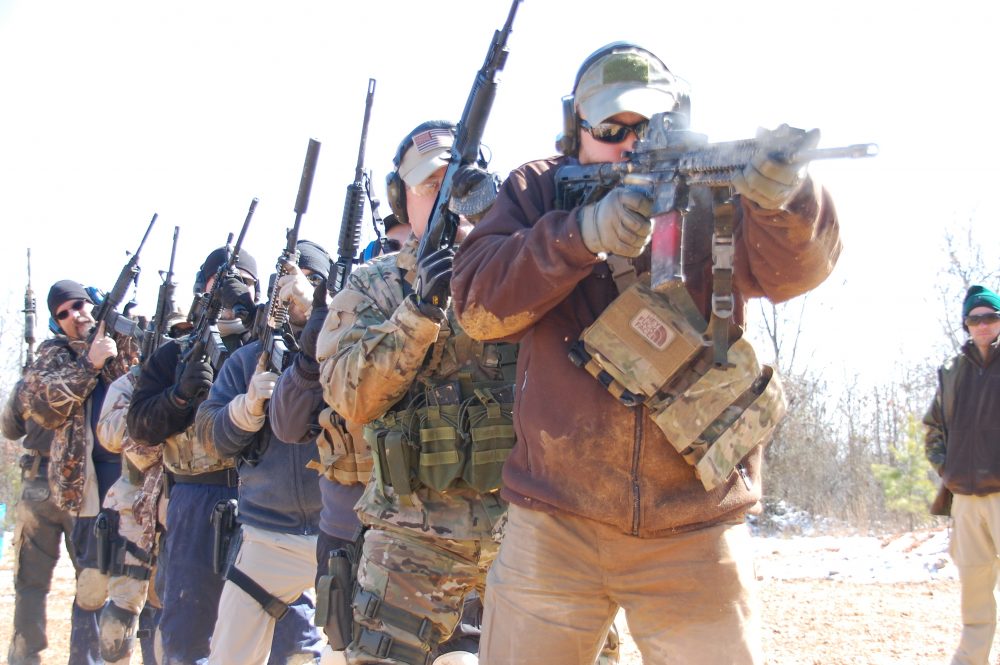
Wolf ammo has gone through a few conformational changes over the years, and the current loading has a polymer coating on the steel case. The Wolf rounds, although inexpensive, tend to polymerize to the chamber of the rifle once the gun has become hot. They thus become so cemented in the chamber that the extractor no longer has the ability to strip the round from the chamber, tying up the gun and necessitating a cleaning rod to punch the round out of the chamber.
I wanted to use the Wolf to see if I could replicate this oft-encountered problem. In these days of expensive ammunition, the savings that using steel-cased ammo offers regular, competition or training shooters are real. A gun that functions 100% with steel-cased ammo would be a boon to the end user.
Tactical Response’s Fighting Rifle class begins with drills focusing on using the pistol when the rifle isn’t working (There are many real world examples of soldiers and police having both a rifle and pistol at hand and forgetting to transition to the pistol when the rifle stops working).
These drills, like all the drills in the Fighting Rifle class, emphasize accuracy. Any hit outside the three-inch DEA dot or the brain or heart boxes of humanoid targets qualifies as a “miss” and thus must be made up. This means the drill is not over until the designated number of hits is present on target.
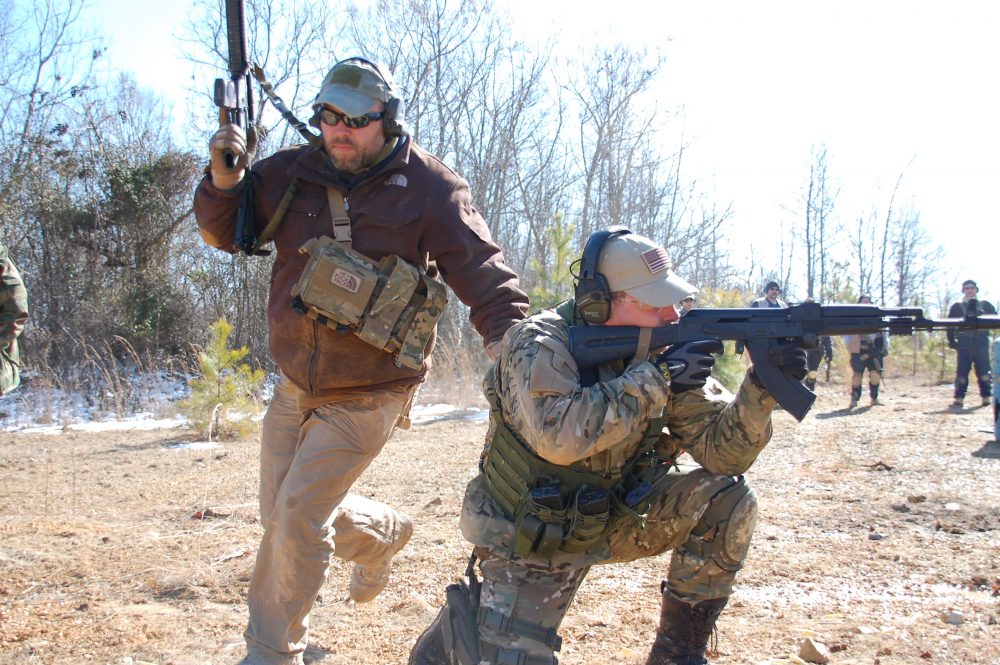
Students are asked to have five magazines for their rifle. At the end of several evolutions of a drill, taping the misses outside of the prescribed target areas, reloading magazines, and rehydrating take place. I decided to make the reloading breaks rougher on the rifle, and Mother Nature helped by providing a steady snowfall on the first day of class, followed by a warmer, albeit muddier landscape on the second day.
I would drop the rifle into the mud or snow, and several other students would kick dirt onto it or walk over it, pressing it farther down into the soft ground. With the dust cover open or closed, the rifle would be covered with a wet, dirty mess. After every iteration of this, the barrel was checked for obstructions and then fired the prescribed number of rounds into the target areas, with almost boring regularity.
I used a combination of Magpul PMAGs and various GI aluminum magazines. During drills, empty magazines were allowed to fall to the ground, and thus accumulated pockets of dirt, snow, mud or a combination thereof. I didn’t shake the debris out of the magazines, just loaded them into my magazine pouches and pushed on.
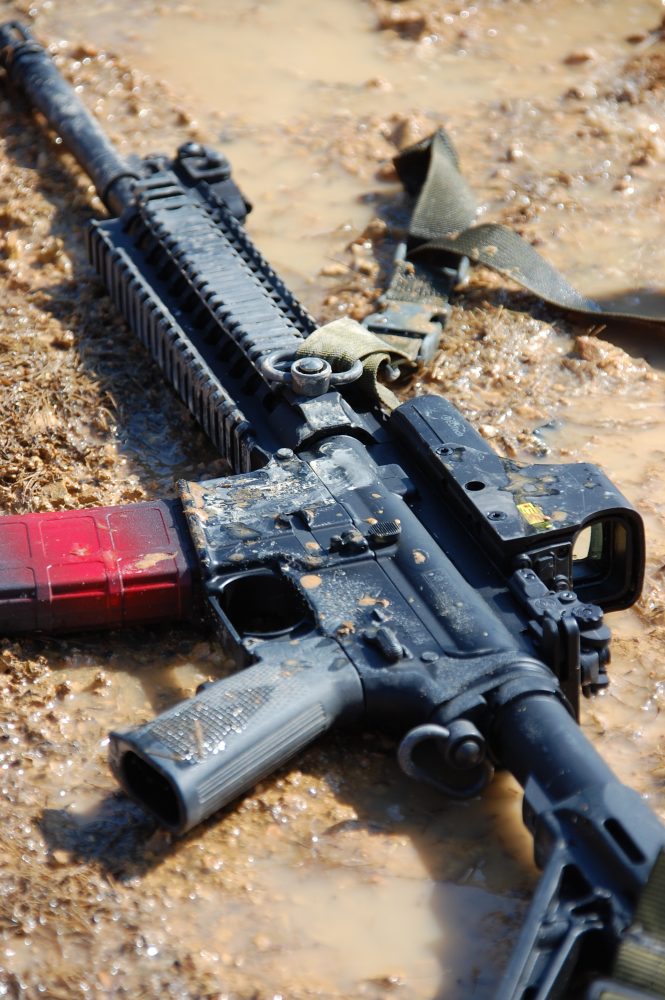
Throughout the two-day course, the rifle continued to function regardless of how dirty the magazines or the ammunition loaded inside them were. In fact, a couple of times the magazines were so dirty that they had to be struck into the magazine well with considerably more force than is normally required to seat a 30-round AR magazine loaded with 28 rounds!
Anyone who shoots ARs regularly knows that the bolt carrier group and the receiver assembly itself get hot rather quickly. The Barrett REC7 differed in that the BCG and receiver assembly stayed only warm to the touch, even when as many as ten magazines were fired in fairly rapid semiautomatic fire.
The gas block and muzzle end of the rail system, however, were quite hot, not unlike an AK or FAL, where there is a redirection of gases from the bore of the weapon to the operating system, which heats the metal housing quickly.
Even with an aggressive “offhand forward” grip of the handguard, I never burned my hand, with or without gloves. The handguard was warm at times but not painfully so. In fact it was quite comforting, since it was snowing and the temperature consistently hovered around freezing for two days.
At the end of the course, the round count on the gun was an even 1,900 rounds. This was divided between 900 rounds of XM193 and 1,000 rounds of Wolf .223.
For me, the ultimate function test for this rifle was to fire magazine after magazine of steel-cased ammunition, with the sticky polymer cases, without issue. I’ve seen too many students struggle with the frustration of steel-cased rounds getting stuck in the gun and requiring more than a remedial action drill to get the gun back into service.
I opened another case of Wolf .223 and loaded nine 30-round PMAGs with 30 (instead of the customary 28) rounds. Two U.S. Servicemen volunteered to help me, and with me handing them fresh magazines, they proceeded to fire eight magazines of the .223 Wolf at a humanoid target, as fast as they accurately could, which was approximately one mag every eight seconds. After firing off the eighth magazine, I had them load a ninth mag and then fire off one round, then hold.
I had hoped that I would be able to have the round polymerize to the chamber and thus tie up the gun. We waited 45 seconds and then commenced firing again. The gun continued to fire for the remainder of the ninth magazine, locking open once the magazine was depleted.
Despite my best efforts, I couldn’t make the Barrett REC7 in 5.56 fail. Dirty magazines, mud and snow in the action of the gun, and hard running had no effect on the rifle. It kept firing, with the customary excellent accuracy a quality AR pattern rifle is capable of.
I think that the Barrett rifle would work well for users in austere environments or law enforcement and security agencies where routine maintenance on company guns is sparse or non-existent. If you are a trainer or regular shooter who fires thousands of rounds a month, you’d be hard pressed to find a better AR pattern rifle than the Barrett REC7 in 5.56. It’s just that good!
[Dr. Sherman House is the Medical Program Director and a Firearms Instructor for Tactical Response Inc. in Camden, Tennessee. Prior to attending professional school, he worked as a firefighter/EMT, public safety officer, armored car guard, and security contractor.]
SOURCES:
Barrett Firearms
Dept. S.W.A.T.
P.O. Box 1077
Murfreesboro, TN 37133
(615) 896-2938
www.barrett.net


